Pollution
Particulate pollution
Did you know we have invested in equipment to monitor levels of particulate air pollution? Follow the link at the top of the page to see the real time readings.
Traffic, burning (including solid fuels and gas) and agricultural activities release tiny particles known as particulate matter (PM). Particulate matter pollution is made up of different sized particles. Small particle air pollution (PM2.5) has more health effects.
The health effects can include breathing difficulties and asthma attacks, as well as contributing to other health conditions, including heart disease and stroke. People with lung or heart problems are more likely to be affected, along with older people, pregnant women and their unborn babies, and very young children.
To reduce the risk and exposure to particulate matter there are some things you can try:
- when cooking with gas use the extractor hood and, including when burning candles and incense, opening a window can significantly reduce indoor exposure
- choosing low impact transport such as, trains, buses, cycling, wheeling, walking or car shares, can reduce the PM contribution from traffic
- instead of bonfires, try composting or the council's garden waste collection service
- if you have a solid-fuel stove or fireplace can you burn better or reduce how much you burn? Solid fuel burning appliances such as wood stoves and coal fires contribute to particulate matter and other pollutant emissions. The Government's 2019 Clean Air Strategy estimates domestic solid fuel burning is responsible for 38% of PM2.5 pollution in the UK
- remember it is important to heat your home appropriately to remain safe and healthy
Smoke and burning
Did you know that your stove or open fire produces tiny, harmful particles that are damaging to your health?
In an hour, wood burning produces the same harmful PM2.5 air pollution as 6 HGVs (Air Quality Expert Group (2017), Potential Air Quality Impacts from Biomass Combustion).
If you use a log burner or stove at home there are things you can do to ensure you are using it as efficiently as possible. It could mean you end up burning less and saving money, without affecting the heat output:
- Install a Carbon Monoxide detector
- Burn dry, seasoned wood. Avoid burning plastics or treated waste wood
- Look out for the 'Ready to Burn' logo on fuel packaging
- Store your wood in a dry and well ventilated area
- Sweep your chimney regularly. A professional sweep can also advise you on using your appliance
- Contact your stove manufacturer or installer for bespoke operating advice
- If you have an older or inefficient stove or one that's too big, consider replacing it with a modern efficient model
- You can find more information on the DEFRA burn better website and burn right website.
Restrictions on the sale of firewood, manufactured solid fuels and coal sold for combustion in domestic premises
The sale of traditional house coal and bags of 'wet' or 'unseasoned' wood is now banned in the UK. Check for the government-approved 'Ready To Burn' logo when buying small bags of firewood and solid fuel briquettes. This means it has a low moisture content, so it burns more efficiently with less harmful smoke and air pollution. It is also better for stoves, fireplaces and chimneys as well as reducing fuel and maintenance costs.
The Air Quality (Domestic Solid Fuels Standards) (England) Regulations 2020 place restrictions on fuel sold for combustion in domestic premises from 01 May 2021:
- Firewood sold in units of less than 2 cubic metres must be certified by the 'Ready To Burn' and the certification details and scheme logo must be attached to the packaging and clearly displayed at the point of sale
- If firewood is sold in units of more than 2 cubic metres, customers must be provided with a notice that explains how to dry, store and check the moisture of the wood before it is used
- All manufactured solid fuels must be certified by the Ready To Burn scheme
- Some fuels are exempt from the certification requirements including: coffee logs, olive logs, wine logs and fuels mostly made of wheat husks, straw, miscanthus, bamboo or compressed food waste.
Do you use coal at home?
- From 1st May 2023 "traditional house coal" or "bituminous coal" (these are the ones that produce a lot of smoke) were no longer be allowed to be sold. Your supplier should advise you on the best alternative manufactured solid fuel to switch to
- People with log burners and open fires can still use up what they have, but are now required to buy cleaner alternative fuels such as dry wood and manufactured solid fuels which produce less smoke
- Low smoke ('smokeless') fuels may still be available. Coal merchants and retailers can continue to sell: anthracite coal, semi-anthracite coal and low volatile steam coal
- The new rules apply to everyone, including places not covered by a smoke control area.
Further information is available from the Department for Environment, Food and Rural Affairs (DEFRA) and the Ready To Burn consumer leaflet.
Retailers can download our Ready to Burn Flier for more information.
Smoke control areas
To protect air quality and the health of residents, some areas of Chorley have been designated smoke control areas. View more information on smoke control areas on the Chorley Council website.
Nuisance complaints
Please note that if you have a current issue, which involves smoke from bonfires, chimneys, construction and demolition sites; emissions of dust/gases from industrial or commercial property, which affect you and your home, you can make a complaint.
View more information on how to make a noise and nuisance complaint on the Chorley Council website.
